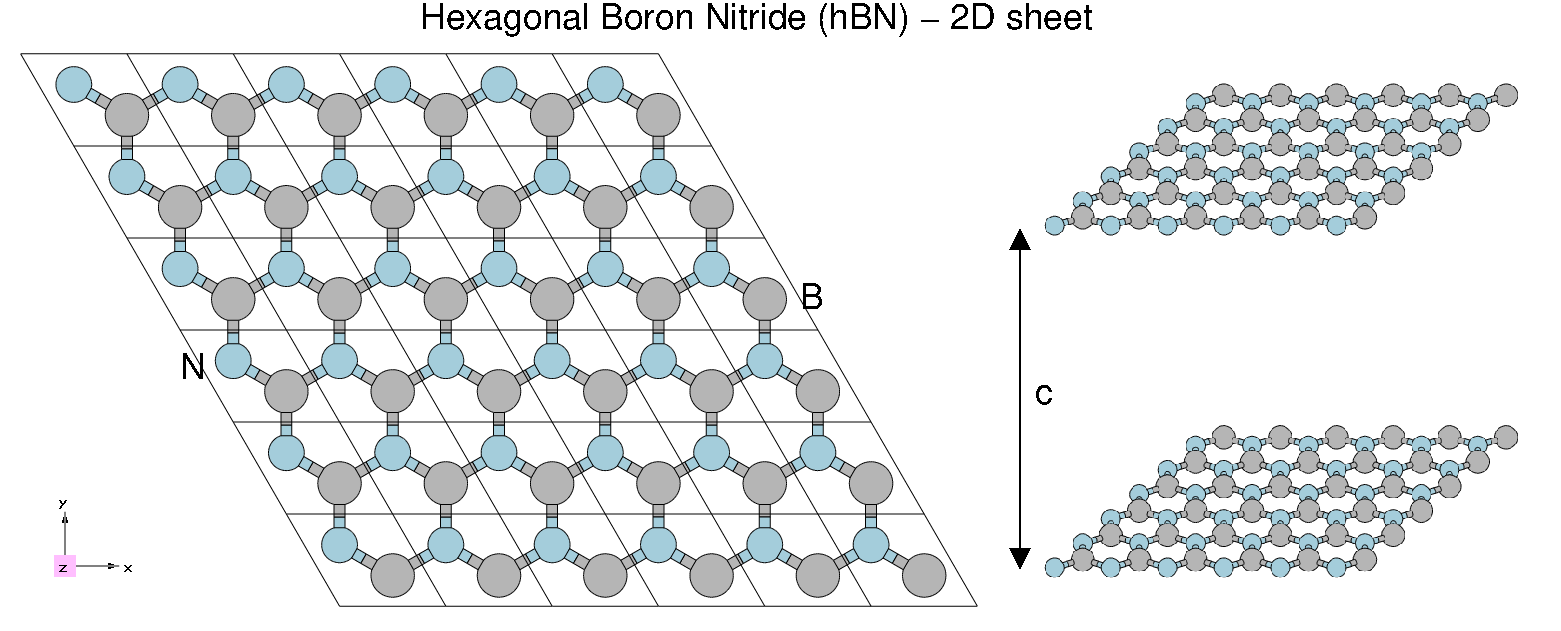2D material: h-BN sheet: Difference between revisions
No edit summary |
No edit summary |
||
| (2 intermediate revisions by the same user not shown) | |||
| Line 5: | Line 5: | ||
* You must first follow the tutorial on [[Bulk_material:_h-BN|bulk hBN]]. | * You must first follow the tutorial on [[Bulk_material:_h-BN|bulk hBN]]. | ||
'''You will need''': | '''You will need''': | ||
* <code>pw.x</code> executable, version 5.0 or later | * <code>pw.x</code> executable, version 5.0 or later | ||
* <code>p2y</code> executable | * <code>p2y</code> executable | ||
* Follow the instructions in the | * Follow the instructions in the [[Tutorials#Files|File page]] and download and unpack the hBN-2D.tar.gz. | ||
''' | ''' | ||
Latest revision as of 13:38, 31 October 2019
In this tutorial you will learn how to generate the Yambo SAVE folder for a 2D hBN sheet starting from a PWscf calculation.
Prerequisites
Previous modules
- You must first follow the tutorial on bulk hBN.
You will need:
pw.xexecutable, version 5.0 or laterp2yexecutable- Follow the instructions in the File page and download and unpack the hBN-2D.tar.gz.
System characteristics
Hexagonal boron nitride sheet - 2D hBN:
- 2D HCP lattice
- Two atoms per cell, B and N (8 electrons)
- Lattice constants: a = 4.716 [a.u.], c/a = 7 (supercell size)
- Plane wave cutoff 40 Ry (~5000 RL vectors in wavefunctions)
- SCF run: shifted 6x6x1 grid (12 k-points) with 4 bands
- Non-SCF run: gamma-centred 6x6x1 (7 k-points) grid with 60 bands
DFT calculations
Unpack the tarfile. It uses the same file structure as other yambo tutorials:
$ cd YAMBO_TUTORIALS/hBN-2D/PWSCF $ ls Inputs Pseudos PostProcessing References hBN_2D_scf.in hBN_2D_nscf.in hBN_2D_scf_bands.in hBN_2D_nscf_bands.in
The procedure is exactly the same as following in the Bulk_material:_h-BN tutorial, so no detailed explanations will be given here.
pw.x < hBN_2D_scf.in > hBN_2D_scf.out pw.x < hBN_2D nscf.in > hBN_2D_nscf.out
The valence band maximum is computed at -4.29 eV. After these two runs, you should have a hBN_2D.save directory.
$ ls hBN_2D.save data-file.xml charge-density.dat gvectors.dat B.pz-vbc.UPF N.pz-vbc.UPF K00001 K00002 .... K00011 K00012
Conversion to Yambo format
Run the converter and check that the databases contain the information you expect:
$ cd hBN_2D.save $ p2y <---> DBs path set to . <---> Index file set to data-file.xml ... <---> == P2Y completed == $ yambo -D [RD./SAVE//ns.db1]------------------------------------------ Bands : 60 K-points : 7 G-vectors [RL space]: 21817 Components [wavefunctions]: 2736 ... [RD./SAVE//ns.wf]------------------------------------------- Fragmentation :yes Bands in each block : 60 ... [RD./SAVE//ns.kb_pp_pwscf]---------------------------------- Fragmentation :yes - S/N 0000908 -------------------------- v.04.01.02 r.00000 -
Note that the number of wavefunction components (G-vectors) is much higher than in the bulk hBN case (why?)
Continue using a SAVE we prepared previously:
$ cd ../../YAMBO $ ls SAVE
Summary
From this tutorial you've learned:
- How to run a DFT calculation with PWscf in preparation for Yambo
- Convert the DFT output into the Yambo format
- How to check the contents of the netCDF databases
More
| Prev: Tutorials Home | Now: Tutorials Home --> First steps --> 2D hBN | Next: Initialization#2D_hBN |
